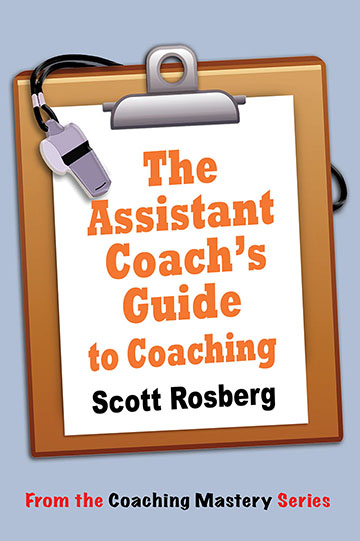The Coach’s Information to Navigating the Monitor and Discipline Calendar: A 12 months of Planning and Efficiency
Associated Articles: The Coach’s Information to Navigating the Monitor and Discipline Calendar: A 12 months of Planning and Efficiency
Introduction
On this auspicious event, we’re delighted to delve into the intriguing subject associated to The Coach’s Information to Navigating the Monitor and Discipline Calendar: A 12 months of Planning and Efficiency. Let’s weave attention-grabbing data and supply contemporary views to the readers.
Desk of Content material
The Coach’s Information to Navigating the Monitor and Discipline Calendar: A 12 months of Planning and Efficiency

The monitor and area season is a marathon, not a dash. Success hinges not simply on athletic prowess, but in addition on meticulous planning and strategic scheduling. A well-structured calendar is the cornerstone of a profitable monitor and area program, guiding athletes by coaching cycles, competitions, and restoration intervals. This text serves as a complete information for coaches, outlining the important thing components of a profitable monitor and area calendar, addressing completely different age teams and aggressive ranges, and providing sensible suggestions for maximizing athlete efficiency.
Understanding the Annual Cycle:
The monitor and area calendar is cyclical, sometimes revolving round a yearly construction encompassing varied phases:
-
Off-Season (sometimes November – February): This significant interval focuses on common bodily preparation (GPP). Athletes have interaction in actions aimed toward enhancing energy, endurance, and total conditioning, whereas minimizing the danger of damage. This would possibly embody cross-training, weightlifting, plyometrics, and adaptability work. The low season permits for bodily and psychological restoration from the earlier season’s calls for.
-
Pre-Season (sometimes March – April): The pre-season marks the transition from GPP to particular coaching. Coaches start incorporating event-specific drills and strategies, steadily rising depth and quantity. The main target shifts in the direction of enhancing pace, energy, and approach related to every athlete’s chosen occasion. Early season low-key competitions can be utilized to gauge health ranges and determine areas needing enchancment.
-
In-Season (sometimes Might – August): That is the height competitors part. Athletes take part in a sequence of meets, culminating in main championships (e.g., state championships, nationwide championships). Coaching depth varies relying on the proximity to main competitions, using periodization strategies to optimize efficiency at essential moments. Restoration and damage prevention stay paramount.
-
Publish-Season (sometimes September – October): This era focuses on lively restoration and damage rehabilitation. Athletes steadily scale back coaching quantity and depth, permitting their our bodies to get better from the calls for of the aggressive season. That is additionally a time for reflection, evaluating the season’s successes and shortcomings, figuring out areas for enchancment within the upcoming 12 months.
Growing a Coach’s Calendar: Key Issues:
Making a complete calendar requires cautious consideration of a number of components:
-
Athlete Age and Expertise: Coaching packages should be tailor-made to the precise wants and capabilities of every athlete. Youthful athletes require extra emphasis on elementary abilities and conditioning, whereas skilled athletes can deal with higher depth and quantity. Coaches should differentiate coaching plans for junior excessive, highschool, faculty, and elite athletes.
-
Occasion Specialization: The calendar ought to replicate the precise calls for of every athlete’s occasion. A protracted-distance runner would require a special coaching schedule than a sprinter or a area occasion athlete. Coaches have to combine event-specific coaching into the general program.
-
Competitors Schedule: The calendar should align with the competitors schedule, factoring in native, regional, and nationwide meets. Coaches ought to determine key goal competitions and construction coaching accordingly, peaking efficiency for these occasions.
-
Relaxation and Restoration: Satisfactory relaxation and restoration are important for stopping accidents and optimizing efficiency. The calendar ought to incorporate relaxation days, lively restoration intervals, and doubtlessly de-loading weeks to permit athletes to get better from intense coaching intervals.
-
Flexibility: Sudden occasions, equivalent to accidents or sickness, can disrupt the best-laid plans. The calendar needs to be versatile sufficient to accommodate these unexpected circumstances. Coaches should be ready to regulate coaching schedules as wanted.
-
Communication: Open communication between coach and athlete is essential. The calendar needs to be shared with athletes, guaranteeing they perceive the coaching plan and its rationale. Common check-ins permit for changes primarily based on particular person progress and suggestions.
Pattern Calendar Construction (Excessive College Monitor & Discipline):
This can be a pattern calendar and wishes changes primarily based on particular wants and the aggressive calendar.
November – December (Off-Season):
- Focus: Common conditioning, energy coaching, flexibility.
- Actions: Cross-training (working, swimming, biking), weightlifting, plyometrics, yoga.
- Competitions: None.
January – February (Off-Season/Transition):
- Focus: Elevated working quantity, introduction of pace work.
- Actions: Interval coaching, tempo runs, hill repeats, fundamental monitor drills.
- Competitions: Presumably one low-key indoor meet.
March – April (Pre-Season):
- Focus: Occasion-specific coaching, elevated depth.
- Actions: Sprints, hurdles, jumps, throws, particular approach work, longer runs for distance runners.
- Competitions: A number of smaller meets to evaluate health.
Might – June (In-Season):
- Focus: Peak efficiency for main competitions.
- Actions: Excessive-intensity coaching, tapering earlier than main meets, race technique follow.
- Competitions: League meets, invitational meets, regional championships.
July (In-Season):
- Focus: Sustaining health, getting ready for championship meets.
- Actions: Sustaining coaching quantity, specializing in race-day methods.
- Competitions: State championships, nationwide qualifying meets.
August (Publish-Season):
- Focus: Energetic restoration, damage prevention.
- Actions: Decreased coaching quantity, cross-training, flexibility work.
- Competitions: None.
September – October (Publish-Season):
- Focus: Full relaxation, bodily and psychological restoration.
- Actions: Gentle exercise, give attention to damage rehabilitation if wanted.
- Competitions: None.
Expertise and Calendar Administration:
Trendy know-how affords a number of instruments for managing monitor and area calendars successfully. Coaches can make the most of:
-
Spreadsheet software program (Excel, Google Sheets): These are wonderful for creating detailed coaching plans and monitoring athlete progress.
-
Calendar functions (Google Calendar, Outlook Calendar): These assist schedule practices, competitions, and different essential occasions.
-
Coaching administration software program: Specialised software program supplies extra superior options for monitoring exercises, analyzing knowledge, and producing reviews.
-
Workforce communication platforms (Slack, Groups): These facilitate communication between coaches and athletes, guaranteeing everyone seems to be knowledgeable in regards to the schedule and coaching plans.
Conclusion:
A well-structured monitor and area calendar is crucial for reaching athletic success. By fastidiously contemplating athlete wants, competitors schedules, and restoration intervals, coaches can create a coaching program that maximizes efficiency and minimizes the danger of damage. Using fashionable know-how can additional improve calendar administration and communication, resulting in a extra environment friendly and efficient coaching course of. Keep in mind that flexibility and open communication are key to adapting the calendar to the ever-changing calls for of the monitor and area season. The last word aim isn’t just to create a calendar, however to construct a plan that empowers athletes to achieve their full potential.








Closure
Thus, we hope this text has offered priceless insights into The Coach’s Information to Navigating the Monitor and Discipline Calendar: A 12 months of Planning and Efficiency. We admire your consideration to our article. See you in our subsequent article!